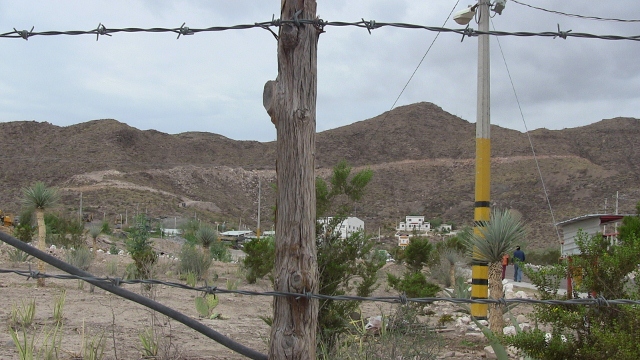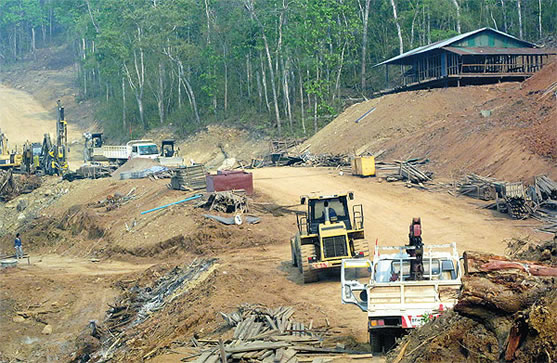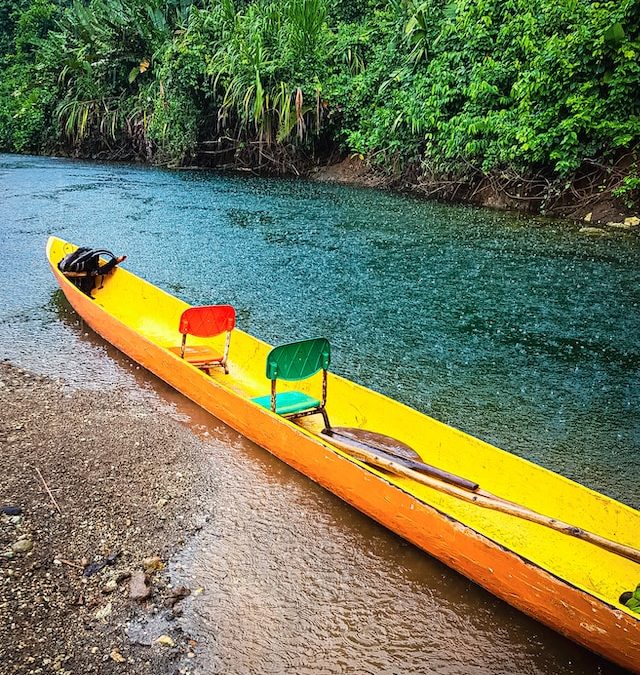by Deep Green Resistance News Service | Aug 23, 2012 | Climate Change
By John Vidal / The Guardian
Arctic sea ice is set to reach its lowest ever recorded extent as early as this weekend, in “dramatic changes” signalling that man-made global warming is having a major impact on the polar region.
With the melt happening at an unprecedented rate of more than 100,000 sq km a day, and at least a week of further melt expected before it begins to reform ahead of the northern winter, satellites are expected to confirm the record – currently set in 2007 – within days.
“Unless something really unusual happens we will see the record broken in the next few days. It might happen this weekend, almost certainly next week,” Julienne Stroeve, a scientist at the US National Snow and Ice Data Centre in Boulder, Colorado, told the Guardian.
“In the last few days it has been losing 100,000 sq km a day, a record in itself for August. A storm has spread the ice pack out, opening up water, bringing up warmer water. Things are definitely changing quickly.”
Because ice thickness, volume, extent and area are all measured differently, it may be a week before there is unanimous agreement among the world’s cryologists (ice experts) that 2012 is a record year. Four out of the nine daily sea ice extent and area graphs kept by scientists in the US, Europe and Asia suggest that records have already been broken.
“The whole energy balance of the arctic is changing. There’s more heat up there. There’s been a change of climate and we are losing more seasonal ice. The rate of ice loss is faster than the models can capture [but] we can expect the arctic to be ice-free in summer by 2050,” said Stroeve.
“Only 15 years ago I didn’t expect to see such dramatic changes, no one did. The ice-free season is far longer now. Twenty years ago it was about a month. Now it’s three months. Temperatures last week in the arctic were 14C, which is pretty warm.”
Read more from The Guardian: http://www.guardian.co.uk/environment/2012/aug/23/arctic-sea-ice-record-low

by Deep Green Resistance News Service | Aug 22, 2012 | Mining & Drilling, Obstruction & Occupation, Worker Exploitation
By Paul Bocking / Waging Nonviolence
Civil disobedience has halted production at Mexico’s “top grade producer of silver.” Farmers of the La Sierrita village, a close knit community of about 50 families, located 40 minutes north of the city of Gomez Palacio, Durango, have shut down the La Platosa mine owned by Canadian firm Excellon Resources for over a month.
This comes in response to the company’s refusal to negotiate with the community over its requests for the preferential hiring of local people on whose land the company operates, as well as pay the rental rates for its use. Labor conditions within the underground mine where many local residents work is also an issue. Dozens of community members have maintained a nonviolent blockade of the one road into the mine, allowing only essential maintenance workers to pass, resulting in extraction grinding to a halt.
In recent years mining operations have drawn local protests from Peru to Tanzania and Papua New Guinea. Mexico is the site of several high profile struggles, nearly all involving Canadian companies. Communities are opposing the loss of their land and its contamination with toxins, including arsenic and cyanide, which are used in abundance in the extraction of gold.
Unlike many of these conflicts, the residents of La Sierrita have succeeded in inflicting a substantial economic cost to the company. As in the case of an effective strike, it is hoped that the continued shut down of its sole mining operation will eventually force Excellon to yield. Along with the community’s unified resolve to maintain the blockade, what distinguishes this struggle is that so far, it has succeeded in effectively disrupting the mine without triggering violent repression from the Mexican government or the company.
Many human rights activists are accustomed to campaigning against U.S.-based transnational corporations, which continue to dominate many sectors, but in the particularly violent, exploitative and dirty world of resource extraction, Canadian corporations are among the worst culprits. Since the mid-1990s, the Canadian-based mining sector has emerged to become the biggest in the world. The Toronto Stock Exchange is now the principal source of finance capital for mining operations. In 2010, Canadian mining companies held assets worth $129 billion internationally, with 90 percent owned by the 70 largest firms. Mexico is the second biggest country for Canadian overseas mining operations. With five mines, Goldcorp has the largest Canadian corporate presence in Mexico. Goldcorp also owns the infamous Marlin mine in Guatemala, where the company has been implicated in the deaths of human rights activists protesting its incursion into traditional indigenous territories.
Read more from Waging Nonviolence: http://wagingnonviolence.org/2012/08/no-silver-medal-mexican-farmers-battle-canadian-mine-for-control-of-their-land/
by Deep Green Resistance News Service | Aug 22, 2012 | White Supremacy
By Kanya D’Almeida and Bret Grote / Al Jazeera
Russell “Maroon” Shoats has been kept in solitary confinement in the state of Pennsylvania for 30 years after being elected president of the prison-approved Lifers’ Association. He was initially convicted for his alleged role in an attack authorities claim was carried out by militant Black activists on the Fairmont Park Police Station in Philadelphia that left a park sergeant dead.
Despite not having violated prison rules in more than two decades, state prison officials refuse to release him into the general prison population.
Russell’s family and supporters claim that the Pennsylvania Department of Corrections (PA DOC) has unlawfully altered the consequences of his criminal conviction, sentencing him to die in solitary confinement – a death imposed by decades of no-touch torture.
The severity of the conditions he is subjected to and the extraordinary length of time they have been imposed has sparked an international campaign to release him from solitary confinement – a campaign that has quickly attracted the support of leading human rights legal organizations, such as the Center for Constitutional Rights and the National Lawyers Guild.
Less than two months after the campaign was formally launched with events in New York City and London, United Nations Special Rapporteur on Torture and Other Cruel, Inhuman or Degrading Treatment or Punishment Juan Mendez agreed to make an official inquiry into Shoats’ 21 years of solitary confinement, sending a communication to the U.S. State Department representative in Geneva, Switzerland.
What the Liberals Won’t Tell You
While the state of Pennsylvania has remained unmoved in this matter so far, some in the U.S. government are finally catching on. Decades after rights activists first began to refer to the practice of solitary confinement as “torture,” the Senate Judiciary Subcommittee on the Constitution, Civil Rights and Human Rights held a hearing on June 19 to “reassess” the fiscal, security and human costs of locking prisoners into tiny, windowless cells for 23 hours a day.
Needless to say, the hearing echoed in a whisper what human rights defenders have been shouting for nearly an entire generation: that sensory deprivation, lack of social contact, a near total absence of zeitgebers (cues given by the environment, such as a change in light or temperature, to reset the internal body clock) and restricted access to all intellectual and emotional stimuli are an evil and unproductive combination.
The hearing opened a spate of debate, with newspapers in Los Angeles, New York, Washington, D.C., Tennessee, Pittsburgh, Ohio and elsewhere seizing the occasion to denounce the practice as “torture” and call for a reversal of a 30-year trend that has shattered – at a minimum – tens of thousands of people’s lives inside the vast U.S. prison archipelago.
But as happens with virtually all prison-related stories in the U.S. mainstream media, the two most important words were left unprinted, unuttered: race and revolution.
Any discussion on solitary confinement begins and ends with a number: a prisoner is kept in his or her cell 23 or 24 hours per day, allowed three showers every week and served three meals a day. According to a report by U.N. torture rapporteur Mendez, prisoners should not be held in isolation for more than 15 days at a stretch. But in the U.S., it is typical for hundreds of thousands of prisoners to pass in and out of solitary confinement for 30 or 60 days at a time each year.
Human Rights Watch estimated that there were approximately 20,000 prisoners being held in Supermax prisons, which are entire facilities dedicated to solitary confinement or near-solitary. It is estimated that at least 80,000 men, women and even children are being held in solitary confinement on any given day in U.S. jails and prisons.
Unknown thousands have spent years and, in some cases, decades in such isolation, including more than 500 prisoners held in California’s Pelican Bay state prison for 10 years or more.
Perhaps the most notorious case of all is that of the Angola 3, three Black Panthers who have been held in solitary confinement in Louisiana for more than 100 years between the three of them. While Robert King was released after 29 years in solitary, his comrades – Albert Woodfox and Herman Wallace – recently began their 40th years in solitary confinement, despite an ongoing lawsuit challenging their isolation and a growing international movement for their freedom that has been supported by Amnesty International.
But all these numbers fail to mention what Robert Saleem Holbrook, who was sentenced to life without parole as a 16-year-old juvenile and has now spent the majority of his life behind bars, pointed out: “Given the control units’ track record in driving men crazy, it is not surprising that the majority of prisoners sent into them are either politically conscious prisoners, prison lawyers or rebellious young prisoners. It is this class of prisoners that occupies the control units in prison systems across the United States.”
Holbrook’s observation is anything but surprising to those familiar with the routine violations of prisoners’ human rights within U.S. jails and prisons. The prison discipline study, a mass national survey assessing formal and informal punitive practices in U.S. prisons conducted in 1989, concluded that “solitary confinement, loss of privileges, physical beatings” and other forms of deprivation and harassment were “common disciplinary practices” that were “rendered routinely, capriciously and brutally” in maximum-security U.S. prisons.
The study also noted receiving “hundreds of comments from prisoners” explaining that jailhouse lawyers who file grievances and lawsuits about abuse and poor conditions were the most frequently targeted. Black prisoners and the mentally ill were also targeted for especially harsh treatment. This “pattern of guard brutality” was “consistent with the vast and varied body of post-war literature, demonstrating that guard use of physical coercion is highly structured and deeply entrenched in the guard subculture.”
Read more from Al Jazeera: http://www.aljazeera.com/indepth/opinion/2012/08/20128694647587767.html

by Deep Green Resistance News Service | Aug 20, 2012 | Biodiversity & Habitat Destruction
By Lawrence Del Gigante / Inter-Press Service
“While each project proposed in Cambodia comes with a different set of impacts, large dams are likely to widen the gap between the rich and the poor, increase malnourishment levels and lead to an environmentally unsustainable future,” Ame Trandem, South East Asia programme director for International Rivers, told IPS.
Four dam projects have been approved so far in Cambodia, with one already operational. All are being developed by Chinese companies on build-operate-transfer agreements, according to Trandem.
The Mekong River runs through six countries, including China and Vietnam, most of which are planning the construction of hydroelectric dams.
“The plans to build a cascade of 11 Mekong mainstream dams is one of the greatest threats currently facing Cambodia,” said Trandem.
The mandate on planning and development of hydropower in Cambodia lies within the ministry of industry, mines and energy, which did not respond to requests for comment.
Another danger of damming the Mekong is the threat to the Mekong delta, an extremely fertile area of land which is responsible for much of the region’s rice supply.
“As the Mekong River feeds and employs millions of people in the region for free, it would be irresponsible to proceed with the Xayaburi and other mainstream dams,” said Trandem.
The Mekong is one of the only rivers in the world to reverse its flow in the dry season. This natural mechanism buffers the intrusion of salt water from the South China Sea into the delta, and could be upset by upstream development.
Dams also block fish migration routes, alter flows, and change aquatic habitats, so these projects are also likely to have an adverse effect on Cambodia’s fisheries.
“The Mekong River Commission’s Strategic Environmental Assessment warned that more than one million fisheries-dependent people in Cambodia would lose their livelihoods and even more would suffer from food insecurity,” said Trandem.
“The loss of even a small percentage of the Mekong’s fisheries can represent in a loss of tens of millions of dollars.”
Partnerships have been established between the countries through which the Mekong runs in order to prevent overharvesting of the river’s resources. However, China is not a signatory to the 1995 Mekong Agreement, and can effectively build these projects independently from downstream countries. The dams in Cambodia are being financed by Chinese investors.
“The impacts of these projects are already being felt downstream,” said Trandem.
Hydroelectricity, even if a successful venture, will not solve the country’s electrification problems, other analysts say.
“Right now it is relatively catastrophic, the power situation in the country,” Alexander Ochs, the director of climate and energy at the Washington-based Worldwatch Institute, told IPS.
Cambodia has one of the lowest electrification rates in Southeast Asia, estimated at only 24 percent, according to the Asian Development Bank (ADB).
The government aims to raise the national electrification rate to 70 percent by 2020, according to the ADB, by expanding the grid and sourcing more than half of the needed electricity from the Mekong River.
A large complication is transmitting the electricity, with only the major cities and surrounding areas having access to power lines, meaning people in rural areas will not benefit from the hydro.
“The number of people that are really connected to a grid as we know it, a modern power service or energy line, in rural areas is as little as seven percent of the population. Overall, nationwide, it’s about 15 percent,” said Ochs.
Read more from Inter-Press Service: http://www.ipsnews.net/2012/08/cambodias-hydro-plans-carry-steep-costs/

by Deep Green Resistance News Service | Aug 17, 2012 | Indigenous Autonomy, Mining & Drilling, NEWS
By Mongabay
Colombia’s move last week to begin granting new mining concessions across 17.6 million hectares has raised concerns about the potential environmental impacts of a new mining boom across the country.
Colombia’s rich mineral deposits have long been eyed by investors, but civil conflict limited extraction to secure areas until the early to mid 2000s. With the decline in violence in recent years, mining projects in the country have mushroomed, including a surge in unlicensed and unregulated wildcat mines — the National Mining Agency said yesterday that a census for 2010-2011 found that 73 percent of mining operations lack proper title.
But with the influx of miners, there have been rising complaints about environmental damage. Earlier this month environmentalists held demonstrations demanding stronger safeguards in a new mining code that will be submitted to Congress next year. Meanwhile indigenous groups have been reporting conflict with both large mining companies and small-scale miners for years.
The Colombian government asserts that despite opening vast areas for mining, including regions renowned for their high levels of biodiversity, the new mining regulation will limit some of the worst damage seen in recent years by formalizing small-scale miners. It says the new mining code will prohibit mining in protected areas and sensitive ecosystems.
Environmentalists aren’t so sure. According to Catherine Gamba-Trimiño, an independent environmental consultant, mining titles and environmental licenses already granted in protected areas would be allowed to stand, while lower-level protected areas, like civil society nature reserves and municipal parks wouldn’t be off-limits.”Governmental efforts to plan and organize development and extractive activities are applauded,” Gamba-Trimiño told mongabay.com. “However, asking Colombian society to pay the price for the environmental licenses already granted in strategic ecosystems such as paramos, instead of perhaps indemnifying companies and revoking former licenses, is not fair.”
Gamba-Trimiño added that indigenous communities — which control large swathes of Colombia, including areas being targeted for mining — may also lose out under the new rules.
“Companies are obliged to consult only with Indigenous and Afro-Colombians before starting operations in their lands, but the Mining and Energy Minister has been clear at saying ‘they have no veto power.'”



